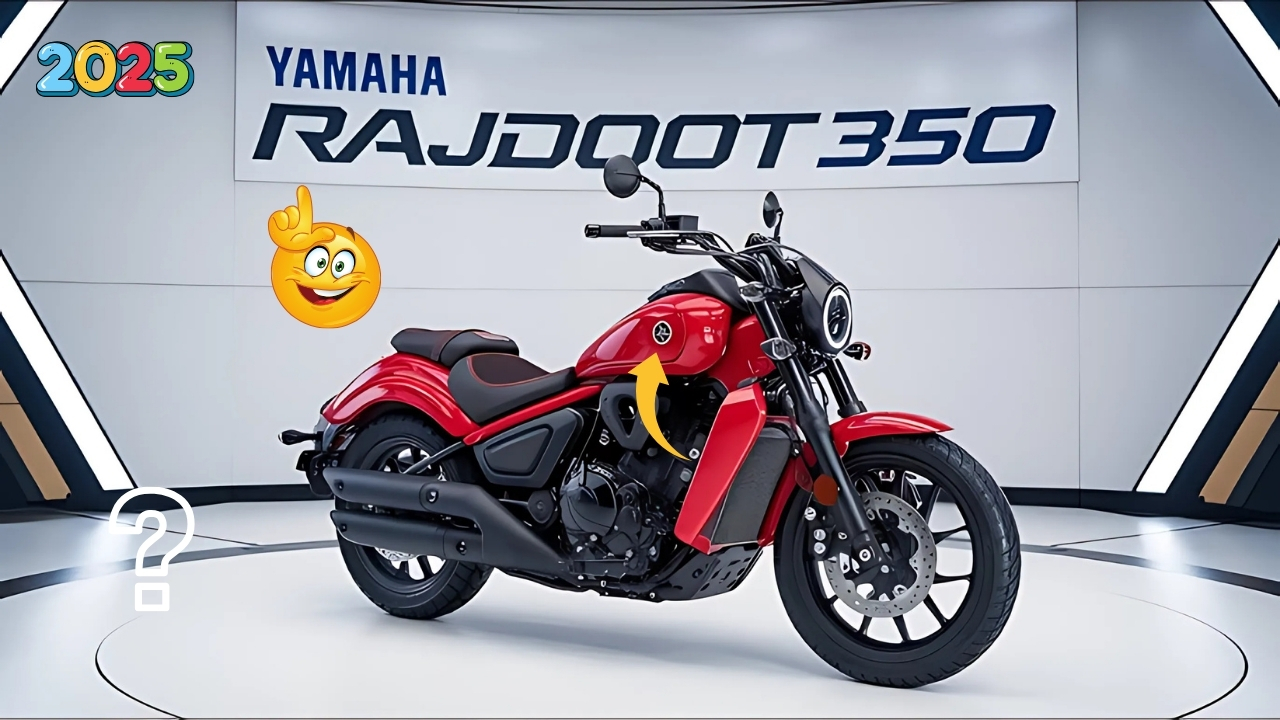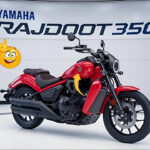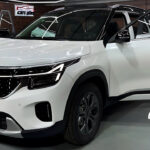New Rajdoot 350: The internet has been buzzing with rumors and claims about the revival of the legendary Rajdoot 350 motorcycle in 2025. These stories have captured the imagination of motorcycle enthusiasts across India, promising the return of an icon that once ruled the performance motorcycle segment in the 1980s. However, beneath the excitement lies a complex web of misinformation, speculation, and wishful thinking that requires careful examination to distinguish fact from fiction.
The Legend Behind the Claims
The original Rajdoot 350, manufactured by the Escorts Group in collaboration with Yamaha from 1983 to 1990, holds an almost mythical status in Indian motorcycling history. It was a licensed copy of the Yamaha RD350B, modified to suit Indian conditions, featuring a 7-port two-stroke parallel twin engine with Yamaha’s patented Torque Induction System using reed valves. The motorcycle was revolutionary for its time, offering 0-60 km/h acceleration in less than four seconds when most Indian roads were dominated by utilitarian vehicles.
The bike’s cultural impact extended far beyond its modest sales figures of approximately 7,000 units. Despite being introduced at Rs 18,000 ex-showroom, which was considered high during those days, it became a real craze among the youth. Its appearance in Bollywood films like “Hero” (1983) cemented its status as a symbol of rebellion and performance, creating a lasting legacy that continues to influence motorcycle culture today.
Current Market Speculation and Claims
Recent online reports have flooded social media and various websites with detailed specifications, pricing, and launch timelines for a supposed “New Rajdoot 350” slated for 2025. These claims include ambitious specifications such as a modern 349cc single-cylinder engine, fuel efficiency of 38-40 kmpl, pricing starting at ₹1.95 lakh, and launch dates ranging from January to August 2025.
Some sources have even gone further, claiming the bike features advanced technology including Bluetooth connectivity, LED lighting, ABS, and digital instrumentation. These detailed specifications and professional-looking articles have created significant buzz among motorcycle enthusiasts eager for the return of the legendary nameplate.
The Reality Check: Debunking the Misinformation
However, a critical examination reveals significant inconsistencies and red flags that cast serious doubt on these claims. A simple reverse image search on Google reveals that the picture of the bike in the stories is a screen grab from a Pakistani YouTuber’s channel from over a year ago, where he is doing a walkaround review of some generic Chinese cruiser. The motorcycle in question bears nothing written on it apart from the Lifan logo text on the engine casing, clearly indicating the use of misleading imagery to support false claims.
The fundamental issue with these revival rumors lies in the corporate structure and business decisions of the companies involved. Escorts wrapped up their motorcycle manufacturing operations in 2001, when the company’s motorcycle plant was closed and sold off to Yamaha. At the moment, Escorts has focussed all their efforts on their tractor and auto components business.
This corporate reality makes any revival under the original partnership structure highly unlikely. Unlike successful brand revivals such as Jawa, Yezdi, and BSA, the Rajdoot brand lacks the same level of global recognition and heritage value that would justify the significant investment required for a comeback.
Technical Analysis of Claimed Specifications
The rumored specifications themselves raise further questions about authenticity. Claims of 50-80 kmpl fuel efficiency are unrealistic, with more plausible figures being 30-35 kmpl based on comparable 350cc four-stroke engines. Modern 350cc motorcycles typically achieve between 30-40 kmpl under real-world conditions, making the extreme efficiency claims technically implausible.
Engine specifications vary wildly across different sources, with some claiming liquid-cooled engines producing up to 35 PS, while others reference air-cooled units with more conservative power figures. This inconsistency in basic technical details further undermines the credibility of these reports.
The Original Rajdoot 350: Performance and Challenges
To understand why a revival faces significant challenges, it’s essential to examine why the original Rajdoot 350 failed commercially despite its performance credentials. The Rajdoot 350 was not a commercial success due to its relatively high fuel consumption in a cost-conscious Indian market. High purchase price, poor availability of expensive spare parts and lack of trained service personnel did not help either.
The original bike’s fuel consumption of 20 km/L (urban) and 25 km/L (mixed) for the HT variant were figures considered quite steep by most of the population at the time. Additionally, the bike was expensive to maintain and the lack of service network for Escorts group and non-availability of properly trained mechanics to handle the 2-cylinder engine added to its challenges.
Current Market Dynamics and Competition
The modern 350cc motorcycle segment in India has evolved significantly since the 1980s. Today’s market is dominated by Royal Enfield’s various 350cc offerings, including the Classic 350, Meteor 350, and Hunter 350, along with competitors like the Honda H’Ness CB350, Jawa models, and upcoming alternatives from various manufacturers.
Any theoretical revival would need to compete against established players with extensive dealer networks, proven reliability records, and strong brand recognition. The Royal Enfield Classic 350, priced around ₹1.95 lakh, already occupies the retro-classic segment that a revived Rajdoot would likely target.
Expert Opinion and Industry Analysis
Automotive industry experts remain skeptical about the Rajdoot revival claims. We think that’s unlikely, given that the Rajdoot brand doesn’t have the same legacy as the other ones we’ve mentioned, notes a ZigWheels analysis comparing it to successful revivals like Jawa and Yezdi.
The lack of any official confirmation from Yamaha, Escorts, or any credible automotive manufacturer further supports the conclusion that these are unfounded rumors rather than legitimate product development activities.
The Collector’s Market Reality
While new production remains highly speculative, the original Rajdoot 350 has found new life in the collector’s market. A well-maintained RD350 can be sold for over 3 lakh rupees these days, with some pristine examples commanding even higher prices. This collector interest demonstrates the enduring appeal of the original design but also highlights the niche nature of its current market.
Restoration enthusiasts continue to maintain and modify original Rajdoots, with some mechanics able to tune the bike to produce as high as 65 bhp. However, enthusiasts spend a lot on maintaining the RDs due to a lack of availability of parts, with some people even importing parts from Japan.
Alternative Interpretations: Electric Future?
Some speculation suggests that any potential revival might take the form of an electric motorcycle rather than a traditional internal combustion engine. The growing electric vehicle market in India and government incentives for electric mobility could theoretically provide a pathway for reviving classic nameplates with modern drivetrains.
However, even this scenario lacks concrete evidence or official backing from any established manufacturer. The electric motorcycle market in India is currently focused on practical, affordable transportation rather than premium retro-styled offerings.
Consumer Advice and Recommendations
For motorcycle enthusiasts hoping for a Rajdoot revival, the current evidence suggests patience and skepticism are warranted. Right now though, if you’re in the market for a 350cc cruiser bike in India, your options are basically limited to just the Royal Enfield Meteor 350, along with other established alternatives.
Potential buyers interested in the Rajdoot legacy might consider:
-
Restored Originals: Well-maintained vintage Rajdoot 350s offer authentic heritage and proven performance, though maintenance can be challenging and expensive.
-
Modern Alternatives: Current 350cc motorcycles from Royal Enfield, Honda, and Jawa provide similar displacement with modern reliability and service support.
-
Wait for Official Confirmation: Any legitimate revival will come with proper press releases, dealer announcements, and official manufacturer backing.
The Cultural Impact Endures
Despite the lack of credible revival prospects, the Rajdoot 350’s cultural significance remains undiminished. Its influence on Indian motorcycle design, performance expectations, and enthusiast culture continues to resonate decades after production ended. The bike’s legacy lives on through rider communities, restoration projects, and its role in inspiring subsequent generations of performance motorcycles.
The original Rajdoot 350 proved that Indian riders were ready for performance motorcycles, paving the way for today’s diverse market that includes everything from high-performance sport bikes to adventure touring machines. In many ways, every modern performance motorcycle sold in India carries some DNA from the pioneering Rajdoot 350.
Conclusion: Legacy Versus Reality
While the prospect of a New Rajdoot 350 returning in 2025 captures the imagination and nostalgia of motorcycle enthusiasts, the available evidence strongly suggests these claims are based on speculation rather than fact. The combination of misleading imagery, inconsistent specifications, lack of official confirmation, and corporate realities makes a legitimate revival highly improbable under current circumstances.
The Rajdoot 350’s true legacy lies not in unsubstantiated comeback rumors but in its foundational role in establishing India’s performance motorcycle culture. Its influence can be seen in today’s thriving 350cc segment, where manufacturers compete to offer the perfect blend of performance, efficiency, and character that the original Rajdoot pioneered four decades ago.
For now, the Rajdoot 350 remains what it has been since 1990: a cherished memory, a collector’s prize, and an inspiration for future motorcycle development. Until credible manufacturers with official backing announce concrete plans, enthusiasts are better served exploring the excellent modern alternatives available in today’s competitive motorcycle market while appreciating the original’s enduring contribution to Indian motorcycling history.










